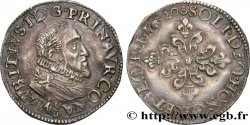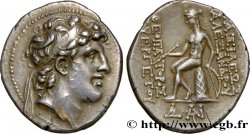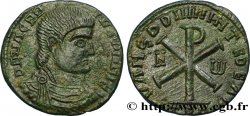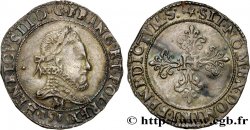Live auction - bfe_402103 - BISHOPRIC OF MENDE - ANONYMOUS Obole
You must signin and be an approved bidder to bid, LOGIN TO BID. Accounts are subject to approval and the approval process takes place within 48 hours. Do not wait until the day a sale closes to register. Clicking on "BID" constitutes acceptance of the terms of use of cgb.fr private live auctions.
Bids must be placed in whole Euro amounts only. The sale will start closing at the time stated on the item description; any bids received at the site after the closing time will not be executed. Transmission times may vary and bids could be rejected if you wait until the last second. For further information check the Live auction FAQ
All winning bids are subject to a 18% buyer’s fee.
All winning bids are subject to a 18% buyer’s fee.
| Estimate : | 4 500 € |
| Price : | 2 800 € |
| Maximum bid : | 2 800 € |
| End of the sale : | 27 September 2016 16:58:25 |
| bidders : | 1 bidder |
Type : Obole
Date: n.d.
Mint name / Town : Mende
Metal : silver
Diameter : 15 mm
Orientation dies : 4 h.
Weight : 0,41 g.
Rarity : R3
Coments on the condition:
Cette obole est frappée sur un flan large, légèrement irrégulier et voilé. Exemplaire recouvert d’une patine grise
Catalogue references :
Predigree :
Exemplaire de la collection Régis Chareyron illustré dans le corpus des monnaies du Languedoc carolingien et féodal et du Roussillon d’Ali Benebiba et Jean-Marie Diaz
Obverse
Obverse legend : S: PRIVATVS.
Obverse description : Buste de saint Privat de face, mîtré, coupant la légende en bas.
Obverse translation : (Saint Privat).
Reverse
Reverse legend : + MIMAS CIVITAS.
Reverse description : Croix cantonnée de quatre annelet reliés par un trait au cœur de la croix.
Reverse translation : (Cité de Mende).
Commentary
Cette monnaie figure parmi les monnaies les plus rares du monnayage féodal français et est absente du Boudeau. Un premier exemplaire découvert à Paladru a été acquis en 1846 par le Cabinet des médailles de Grenoble a été publié Gustave Vallier en 1875 et est reprise dans l’ouvrage d’Émile Caron en 1882. Les émissions de Mende sont également attestées par des sources archivistiques. En 1263, elles sont décriées, mais une nouvelle autorisation de frappe fut délivrée le 9 février 1266 et leur cours est confirmé dans un document du 8 novembre 1272.
This coin is among the rarest coins in French feudal coinage and is absent from Boudeau. A first example discovered in Paladru was acquired in 1846 by the Cabinet des médailles de Grenoble, was published by Gustave Vallier in 1875 and is included in the work of Émile Caron in 1882. The Mende issues are also attested by archival sources. In 1263, they were criticized, but a new authorization to strike was issued on February 9, 1266, and their rate is confirmed in a document dated November 8, 1272.
This coin is among the rarest coins in French feudal coinage and is absent from Boudeau. A first example discovered in Paladru was acquired in 1846 by the Cabinet des médailles de Grenoble, was published by Gustave Vallier in 1875 and is included in the work of Émile Caron in 1882. The Mende issues are also attested by archival sources. In 1263, they were criticized, but a new authorization to strike was issued on February 9, 1266, and their rate is confirmed in a document dated November 8, 1272.







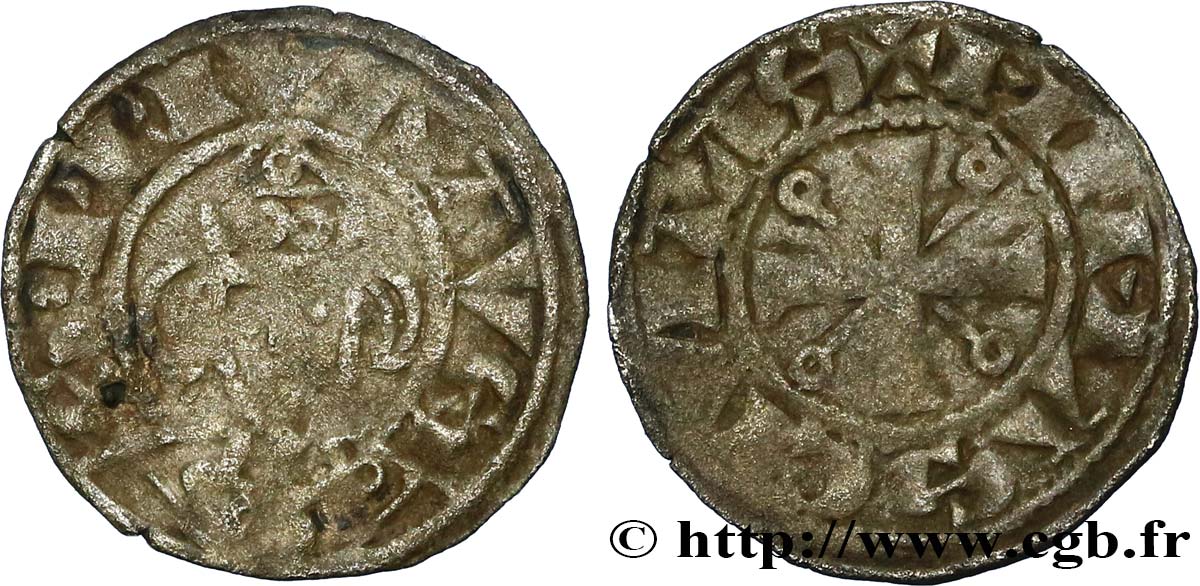
 Report a mistake
Report a mistake Print the page
Print the page Share my selection
Share my selection Ask a question
Ask a question Consign / sell
Consign / sell